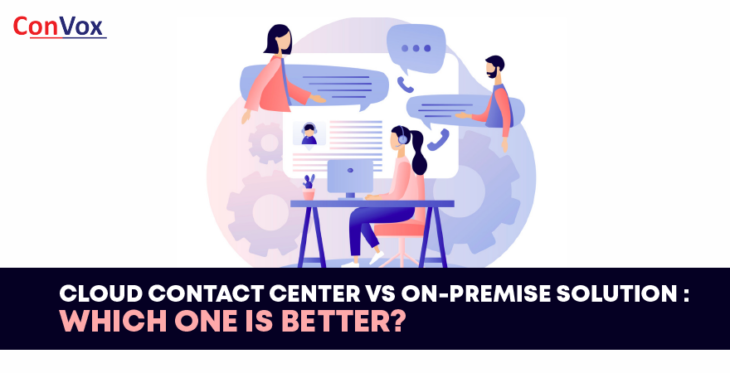
Cloud Contact Center VS On-Premise Solution.
If you are running a business and want to implement a contact center, one of the essential decisions that you need to make is whether to choose a cloud contact center or on-premise.
When a company goes for an on-premise contact center, they take complete responsibility for every stringed customer care task. They own their hardware, software as well as network to just handle all the calls. And, it is up to them to buy, analyze, install and sustain all the systems.
Let’s know more about the difference between cloud contact center and an on-premise solution and how to identify which one is the best according to your business needs.
Time To Market
Time to market basically means the time you need to go live with your contact center. Since, an on-premise contact center needs the business to buy hardware and choose a location to put in their servers, etc the time to begin is longer. On the other hand, it is way shorter when it comes to cloud contact center solutions where you only require the internet connection as well as the application.
Set-Up
Executing an on-premise call center can consume many months because companies must buy licenses as well as hardware, set up the infrastructure, and get compatible software. On the other hand, setting up cloud-based call centers includes an app on a computer that is functional completely out of the box.
Flexibility And Scalability
Unlike the on-premise contact center system which has to be downgraded as well as upgraded manually as and when the business needs changes, the scenarios of flexibility and scalability are way more convenient with a cloud-based system, which takes just a couple of clicks to scale up or get down.
Agent Productivity
When it comes to on-premise call centers, agents depend on more than one application to do their jobs. Even so, the majority use between 4 and 10. All that time spent manually swapping back and forth between programs adds up, not to mention the lag time as the system runs.
On the other hand, in the cloud contact center, every function an agent requires is available in a single application, which ends the screen toggling runaround.
Well, now that I know all the differences between both types of contact center solutions, it is now the right time to make a decision. If you are having a contact center either on cloud or on-premise, you should be able to analyze the perks properly.
